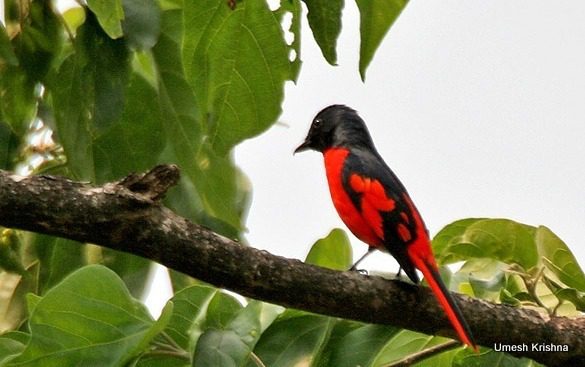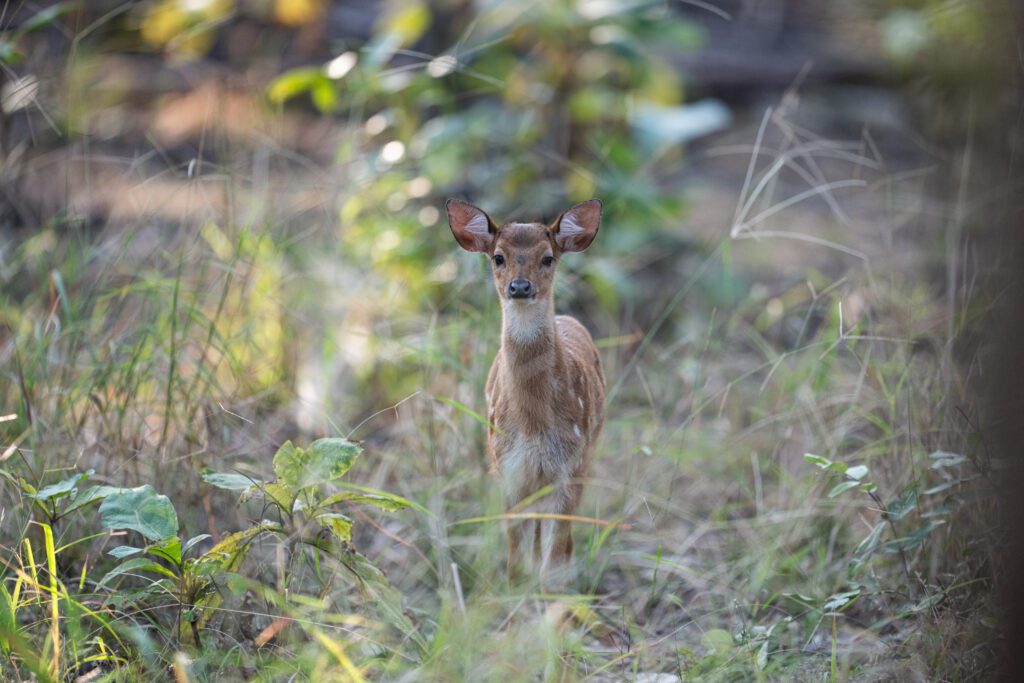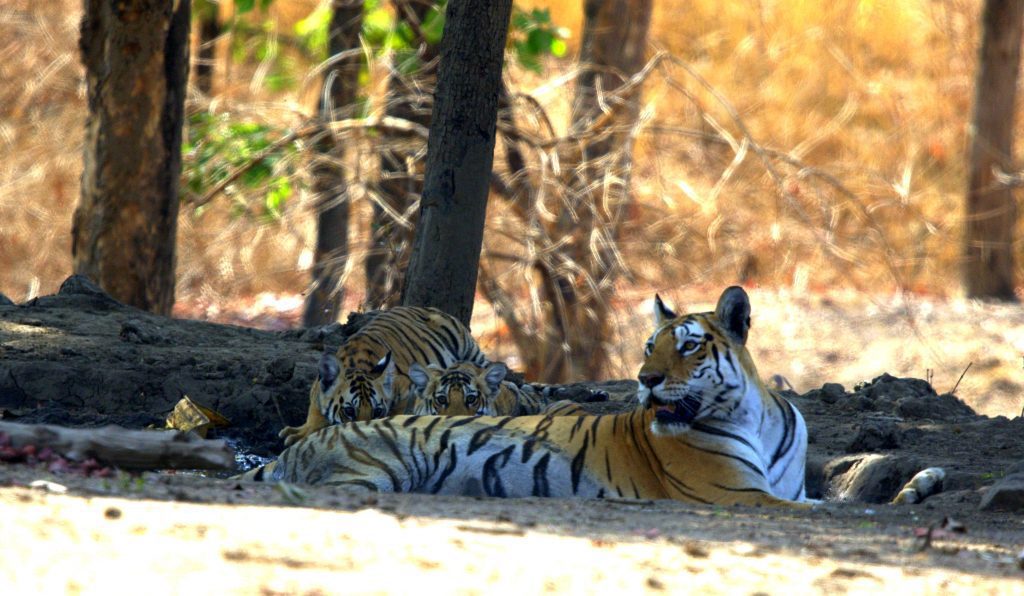Flying Happiness – Birding Walk at Pench Tree Lodge
Emily Dickenson, a great American poet of her time once said that, “Hope is the thing with feathers that perches and sings the tune without the words and never stops at all.” Every time I think of birds or I go for bird watching this quote automatically pops up in my mind. For me, the birds are a symbol of hope and freedom.
Nature has endowed humankind with myriads of species of birds. I believe that one life is perhaps not enough to know about all of them. Their sounds and whistles and the pleasure that one receives in identifying the different sounds made by different birds is ineffable. For the aficionados, even the flutter of a bird’s wings is a way to identify the kind of species. Not every bird but a few such as Green Pigeon, Painted Stork etc. can be identified through the unique sound of their wings. For me their twittering and chirping is a true source of joy.
I recently went for an interesting bird walk during my stay at Pench Tree Lodge situated in Pench – the Land of Mowgli, Central India. Although I do not have much experience in birding but I am a curious bird observer and love to know and read about them. I stayed in the lodge for an entire day and was spellbound on seeing its beauty. The lodge has six tree houses that absolutely blend with the environment and every single second you would feel as if you have settled into the lap of nature. Before our lunch, I was generally talking to the naturalist regarding my interest in birds. Seeing this eagerness, he asked me if I would be interested to go for a bird walk the next morning. I was ecstatic when I heard this and was more than willing to go. Our walk started early on one of the winter mornings in February.
I was accompanied by my colleague Kanushree and by our naturalist Mr. Rakesh Solanki. Like all other naturalists, he too loves wildlife ardently. He is an experienced wildlifer with an in-depth knowledge of birds. He carried two binoculars for us. I and Kanushree were ready with our cameras. I carried a notepad as well to record all the observations. If you wish to indulge into serious birding and want to inculcate this hobby, it’s a good idea to carry a notepad and a book comprising information on birds.
The very first birds that we spotted were Plum-headed Parakeets (Psittacula cyanocephala). These are quite common birds but this was the first time I was enlightened with the difference between males and females. Although I had read about the differences but practically, I had never observed the differences in the natural environment. In Plum-headed Parakeets, while males have plum-red head, and white-tipped blue-green tail, females have grayish head, are smaller-bodied and have white tip tail. Followed by Plum-headed the other parakeets that we spotted were Rose-ringed Parakeet (Psittacula krameri) and Alexandrine Parakeet (Psittacula eupatria).
Ostensibly the weather looked perfect for birding but somehow the lighting conditions were not favourable for photography. I am a passionate photographer and I utterly love to click wildlife. Anyhow, I was enjoying each moment and a constant sound was echoing in my ears. I was quite certain that I had heard the sound earlier also near my house in Delhi. Inquisitively I asked our naturalist about the sound and he told us that this sound was being made by Coppersmith Barbet (Megalaima haemacephala).
. We followed the sound and finally we found out our sound maker sitting on a tree. Meanwhile we also enhanced our knowledge of the flora surrounding us. Scarlet Glory, Lantana, Palash, Mahua, Camel-toe Leaves, Marigolds were some of the beautiful flora which I was lucky to photograph.
There were a couple of common birds that I had spotted and seen earlier such as Jungle Babblers, Lesser Goldenback, Common Bushchat, Pied Bushchat, Black Drongo, Indian Robin, Paddy-field Pipit, Green Bee-eater, Greater Coucal, Indian Grey Hornbill, Spotted Dove, Long-tailed Shrike, Indian Roller, Oriental White-eye, Tickell’s Blue Flycatcher, Black Kite, White-throated Kingfisher, Purple Sunbird, Common Wood Shrike and many more. But the excitement to spot the same bird again is no less than the first time. I believe each time we spot the same bird and observe it keenly we get to know about different behaviours of the same bird.
My excitement knew no boundaries when I spotted an Indian Lorikeet (Loriculus vernalis) and its beautiful colours just swooned me. The excitement was doubled when I saw a few birds for the first time in my life such as Scarlet Minivet, Small Minivet, Black-naped Monarch, Lesser Whitethroat, Ashy Prinia, Large Cuckoo-shrike etc.
As we continued our walk inside the property, we came across plenty of bird species. It is quite impressive that the property itself is home to more than 100 species of birds both resident and migratory that are found in and around the lodge itself. Authentic wilderness within the lodge attracts a lot of birds’ as well as small mammals such as rare Jungle Cats and Palm Civets and I did see a Palm Civet eating his dinner at night. Nevertheless, during our walk I realized a tiny bird was our constant companion. Our naturalist told us the bird was Pale-billed Flowerpecker(Dicaeum erythrorhynchos). The bird is only 8 cm long and is the smallest bird in India.
Bhringraaj or Greater Racket-tailed Drongo (Dicrurus paradiseus) and Babblers were continuously hovering above us making noisy sounds. The distinctive twirled racket tail of the Drongo looked beautiful when the bird was flying. It is quite common to find these Drongos near the Babblers. The reason being Racket-tailed Drongos are good mimics and they mimic the sounds of the bird of prey in order to acquire or snatch food from the Jungle Babblers and this is the reason they are generally found near the clattering Babblers.
We watched for Bushchats and Shrikes as we walked our way to the Kitchen Garden. Quite anticipated we did spot some of them. While passing through the organic garden we saw a Oriental Honey-buzzard (Pernis ptilorhynchus) on a distant tree and while we moved a few steps further a Crested Serpent Eagle (Spilornis cheela) hovered above us for some time and suddenly disappeared somewhere in the dense green of the trees. Rakesh Ji walked us out of the main gate and now the bird walk was to be continued near and around the lodge. As soon as we stepped out of the main gate we saw a pair of Indian Robin, Pipits, Indian Roller and Green Bee-eater partying outside.
One bird that I eagerly wished to see was the Wire-tailed Swallow (Hirundo smithii) as I have always seen it in the pictures and found it very beautiful. As soon as I said that, my wish was granted. We saw a couple of distant Wire-tailed and Red-rumped Swallows hanging on a wire with the help of the binoculars. Another bird that was there on my list of ‘must see birds’ was Indian Silverbill (Euodice malabarica). Luckily I saw a couple of them. Honestly, if I had plenty of time I could have watched them doing activities the entire day as I was so engrossed in watching them.
There was a small pond near the lodge itself. We saw a lot of water birds basking in the sun and searching for food. The main attractions were the Common Sandpiper, Cattle Egret, Open-billed Stork, Cormorants and White Wagtail.
As the sun gradually started hitting the sky we decided to head back to the lodge since we had an evening train to catch. On our way back to lodge some small birds attracted us and they were the Black-headed Buntings and Chestunt-shouldered Pitonia. I was quite fascinated as they were absolutely new birds to me. As we worked our way to the lodge, I watched for a close sighting of any of the bird of prey but missed it. We got skunked on owls for the day but never mind as I was so happy to become a part of the bird walk and did see some spectacular birds that I will never forget.
As we were about to conclude our bird walk, a rare bird pulled all our attention towards it and watching it was adding a feather to the cap. It was Tickell’s Thrush (Turdus unicolor), a passerine bird in the Thrush family. I had been hearing a lot from Rakesh Ji about this migratory bird that had recently started visiting the lodge. And watching it at the end was no less than a treat to me.
All in all, this has been my best bird walk till date and I am quite certain that many more are yet to come. Bird watching is something that makes me forget everything.
I roughly recorded some 50 species of birds during the walk. Some of the left ones are Plain Prinia, Red Dove, Large Grey Babbler, Green Sandpiper, Thick-billed Crow, Golden-fronted Leafbird, Yellow-eyed Babbler, Oriental Turtle Dove, and Bank Myna.
Pench Tree Lodge is a wonderful experience for all the nature lovers. From food to hospitality, the lodge excels in every aspect. But for me, the Bird Walk inside the lodge is something that I would like to do every time I get a chance to visit there. This exceptional resort in Pench National Park not only offers luxurious accommodations but also provides unique opportunities to immerse yourself in nature, making it an ideal destination for wildlife enthusiasts.
Courtesy : Malvika Verma




